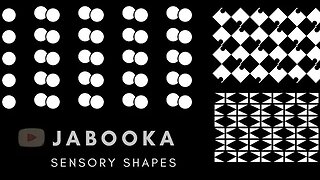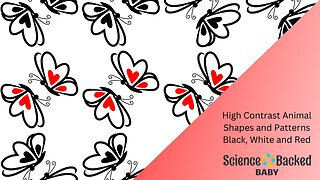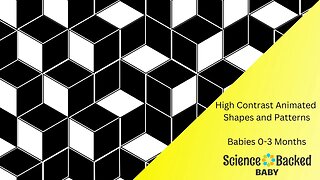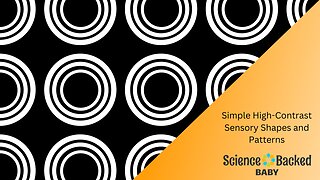Baby Color Recognition with Sensory Shapes
#baby #sensory #lullaby #shapes #babylearning #babyshapes #sensoryplay #babysensoryactivity #shapelearning #babyshapeactivity #sensoryfun #babyshapefun #babysensoryshapes
Baby sensory development refers to the way babies learn about the world through their five senses: sight, hearing, touch, taste, and smell. During the first few months of life, babies are primarily using their sense of smell and touch to explore their environment. As they grow, they begin to use their other senses more, such as vision and hearing. Through their senses, babies learn about different textures, temperatures, shapes, and sounds. Sensory activities, such as playing with different textures, listening to music, or exploring different shapes and colors, can help to promote a baby's development. Sensory play also helps with cognitive and emotional development. It also helps to stimulate their senses and promote brain development.
Visual stimulation, such as exposing babies to different geometric shapes, can play an important role in their sensory development. Geometric shapes, such as circles, squares, and triangles, are simple, easily recognizable forms that can help to stimulate a baby's visual development. By looking at and interacting with different shapes, babies can learn to recognize and differentiate between them. This can help to lay the foundation for later visual-spatial skills, such as understanding spatial relationships and being able to identify objects in their environment.
Exposing babies to geometric shapes through various mediums like toys, flashcards, or even simple drawings can provide a variety of visual experiences that can help to promote their visual development. Using bright colors, contrasting patterns, and different materials can also add to the visual stimulation and make it more engaging for the babies. Additionally, playing games like "Where's the circle" or "Can you find the triangle" can also be a fun way to introduce geometric shapes while promoting their visual development.
-
 4:08
4:08
BabyRelax - Mozart Effect
1 year agoLike Hey Bear High Contrast Shapes and Patterns for Infant Visual and Sensory Stimulation
111 -
 2:27
2:27
BabyRelax - Mozart Effect
1 year agoBlack, Yellow, Purple and White Shapes - Visual Stimulation - Pattern recognition for babies
79 -
 30:08
30:08
Science Backed Baby
1 year agoBaby Visual Learning - High Contrast Animal Shapes in Black, White and Red - 4K with Classical Music
10 -
 30:00
30:00
Science Backed Baby
1 year agoHigh Contrast Shapes and Patterns for Babies and Infants - 4K with Classical Music
2 -
 30:00
30:00
Science Backed Baby
1 year agoHigh Contrast for Infants and Babies - Simple Shapes and Patters in 4K without Audio
1 -
 30:00
30:00
ScienceBackedBaby
1 year agoHigh Contrast Shapes and Patterns for Infants and Babies - 4K with Classical Music
2 -
 30:10
30:10
ScienceBackedBaby
1 year agoHigh Contrast Shapes and Patterns for Babies and Infants - Animated with Classical Music
17 -
 28:43
28:43
Science Backed Baby
1 year agoSensory High Contrast Simple Shapes and Patterns for Infants and Babies - 4K with Classical Music
-
 30:01
30:01
Science Backed Baby
1 year agoHigh Contrast Simple Shapes and Patterns for Infants and Babies - Set to Classical Music in 4K
1 -
 30:00
30:00
ScienceBackedBaby
1 year agoHigh Contrast Animated Shapes and Patterns for Infants and Babies - 4K and Set to Classical Music
4